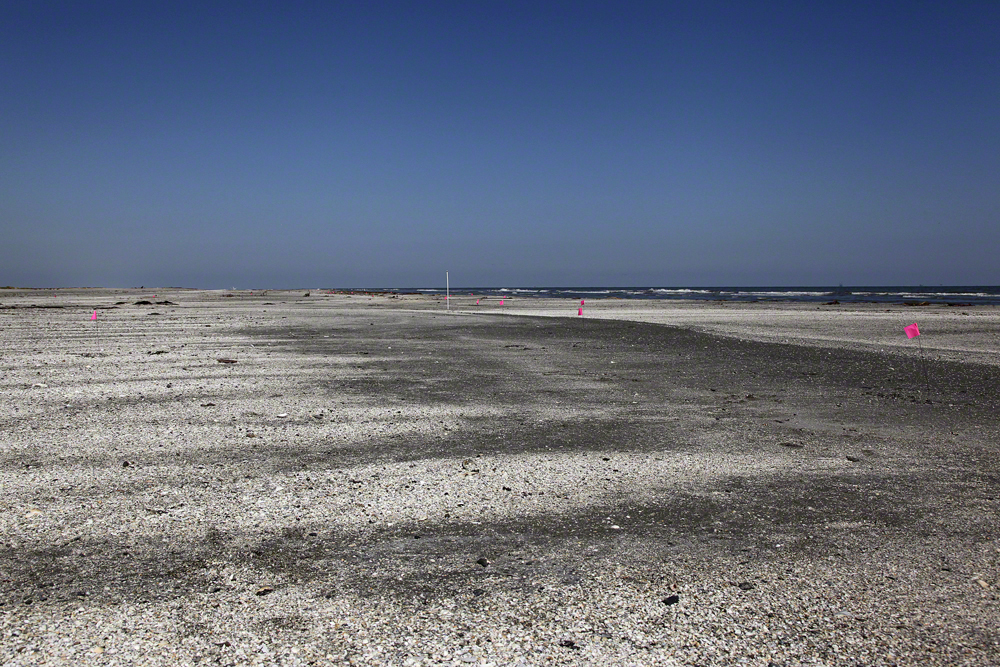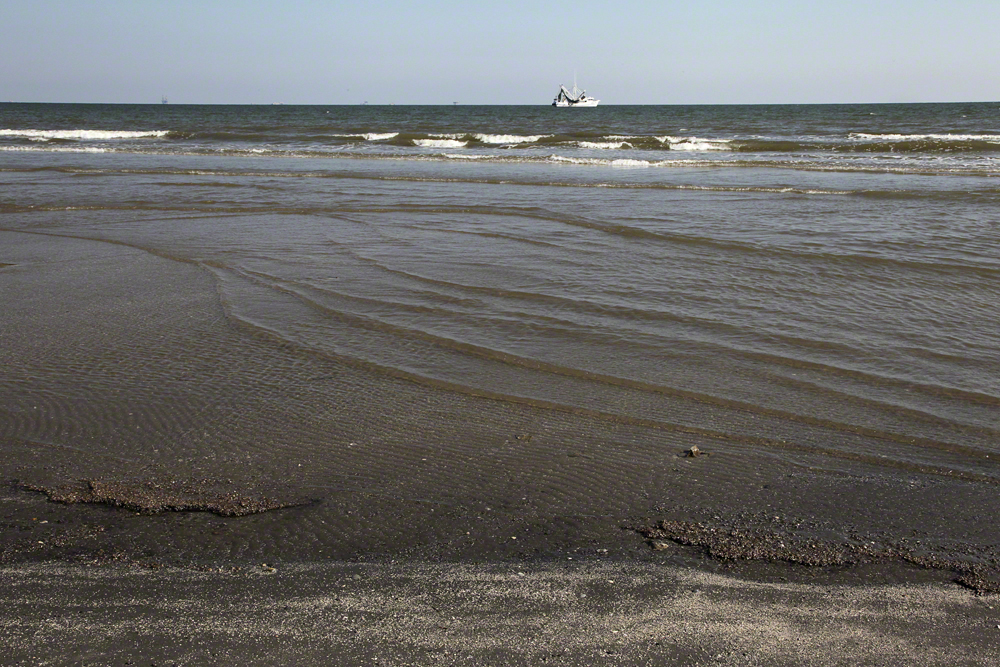|
In April 2010, BP’s Macondo well explosion leaked oil into the Gulf of Mexico, causing one of the worst environmental disasters in US history.
Now, over a year later, problems continue. On September 13, 2011, Al Jazeera investigated an announcement that two public beaches, Fourchon Beach and Grand Terre Island Beach, in Port Fourchon, Louisiana, were closed to the public by BP for undisclosed reasons. Al Jazeera was escorted to the Edward Wisner Land Donation, a land trust where most of the oil was found, along 16km of beach.
Upon examining Fourchon Beach, Al Jazeera found that the recent Tropical Storm Lee had eroded the top sand away, leaving evidence of massive tar and oil mats that have been buried under these beaches since the summer of 2010.
 | | 1) BP recently closed Fourchon Beach to the public for undisclosed reasons [Erika Blumenfeld/Al Jazeera] |
 | | 2) BP sets up a staging area for the oil cleanup on Fourchon Beach [Erika Blumenfeld/Al Jazeera] |
 | | 3) A BP cleanup crew on Fourchon Beach prepares to excavate buried oil [Erika Blumenfeld/Al Jazeera] |
 | | 4) Eroded sand on Wisner Land Donation’s section of Fourchon Beach shows large oil and tar mats sunken below the sand’s surface [Erika Blumenfeld/Al Jazeera] |
 | | 5) Scraping even a centimeter below the sand’s surface yields glistening toxic oil that was never cleaned up by BP in 2010 [Erika Blumenfeld/Al Jazeera] |
 | | 6) Al Jazeera spotted several dead birds, two of which were Louisiana’s state bird, the Brown Pelican, nearby the oil and tar on Fourchon Beach [Erika Blumenfeld/Al Jazeera] |
 | | 7) Forrest Travirca, the Field Inspector for Wisner Land Donation, stands next to a buried tar mat mixed with BP’s oil cleanup debris. Pink flags mark the oil that BP is supposed to clean up [Erika Blumenfeld/Al Jazeera] |
 | | 8) Fields of tar balls cover the beach’s surface [Erika Blumenfeld/Al Jazeera] |
 | | 9) Close-up of a tar ball with oiled seashells [Erika Blumenfeld/Al Jazeera] |
 | | 10) The largest oil mat discovered on Fourchon Beach lies buried under the sand. It is approximately 150 metres long, 100 metres wide, and 20 mm thick [Erika Blumenfeld/Al Jazeera] |
 | | 11) Forrest Travirca shows Al Jazeera that the oil under the sand is wet and “fresh”, and is therefore still highly toxic to the environment, wildlife and marine animals [Erika Blumenfeld/Al Jazeera] |
 | | 12) Al Jazeera witnessed several boats shrimping right off these oiled beaches, which contained oil and tar mats buried along the shoreline as well as under the water [Erika Blumenfeld/Al Jazeera] |
|
![BP oil [Erika/AL Jazeera]](/wp-content/uploads/2011/09/201192214243382734_20.jpeg?resize=570%2C380&quality=80)











